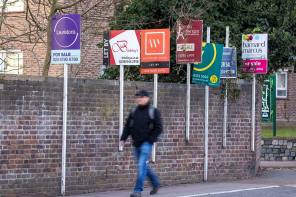

Research from Mortgage Brain, published yesterday (September 16), showed the rate on a 60 per cent loan-to-value two-year fixed mortgage was now 1.9 basis points lower than three months ago, representing an annual saving of £144 on a £150,000 mortgage.
Meanwhile landlords could save £90 on the cost of a 70 per cent LTV, fixed for three years, which had fallen by 1.1 basis points compared to three months ago.
The data also showed borrowers looking to fix for longer fared even better when compared to last year. An 80 per cent LTV five-year fixed was now 3.5 basis points lower compared to this time last year which represented an annual saving of £324.
According to Mortgage Brain, one factor driving down the costs of buy-to-let mortgages was the number of products now available on the market. Further data from the tech platform showed there were now 3,859 products for landlords on the market — 11 per cent more when compared year-on-year.
Mark Lofthouse, chief executive of Mortgage Brain, said: “Overall the message for the buy-to-let market is positive, especially for investors looking to fix for a longer term.
“The cost of buy-to-let mortgages continue to reach historic lows, with the market remaining competitive given the number of mortgages currently on the market.”
But Alan Lakey, director at Highclere Financial, said the lowered rates were a product of a market which had “dipped massively” coupled with an overall competitive mortgage sector where rates were dropping continuously.
Sustained pressure on mortgage pricing — due to a competitive mortgage space which has seen lenders cut rates in a ‘race to the bottom’ — has resulted in historically low costs for mortgages across the sector.
On top of this, currently low swap rates — the rates at which the money markets lend among themselves and to lenders — indicate that interest rate futures markets have already factored in a possible base rate cut due to uncertain economic conditions, suggesting rates are on course to remain low for the foreseeable future.
Mr Lakey also stressed there were many lenders in the market who only offered buy-to-let products.
Such lenders had taken a hit due to a reduction in the number of landlords coming to market due to recent tax and legislative changes, Mr Lakey said, and were therefore aiming to entice borrowers with lower deals.
The buy-to-let market grew rapidly after the financial crisis but has since taken a beating as a number of tax and regulatory changes have hit landlords’ pockets.
An additional 3 per cent stamp duty surcharge, introduced in April 2016, was closely followed by the abolition of mortgage interest tax relief for landlords.
Landlords then took a further hit when a shake up of rules by the Prudential Regulation Authority meant buy-to-let borrowers were now subject to more stringent affordability testing.
Mr Lakey said: “The demand for buy-to-let mortgages has gone down considerably because of the extra tax, especially the stamp duty.
“A lot of my clients have pulled out of new purchases because of the extra stamp duty. The whole market has dipped massively.”
imogen.tew@ft.com
What do you think about the issues raised by this story? Email us on fa.letters@ft.com to let us know.



